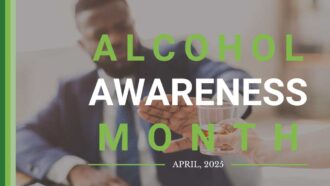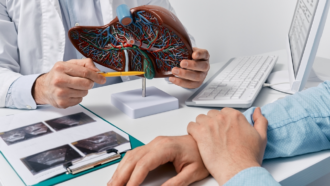
Urge Surfing
Coping With Your Urges to Drink or Take Drugs
Table of Contents
One of the classic symptoms of addiction is a strong craving, or urge, to use the substance in question. This powerful urge typically appears at times when you are not actively drinking or taking drugs. Its presence focuses your attention on the next episode of use. In this way, it helps drive and reinforce the effects of addiction.
When you enter drug or alcohol treatment, you need help coping with your substance urges. Unless you receive this help, your chances of relapsing when treatment ends increase significantly. In addition, you may need longer-term support. That is true because your cravings for drugs or alcohol can linger on after you complete your stay in treatment. They can also be reignited after you have initially gained control over them.
Today, one potential option for coping with your substance cravings is a technique called urge surfing. This technique asks you to face your cravings rather than ignore or avoid them. Crucially, it also teaches you to weather the effects of those cravings without drinking or taking drugs.
Free Mental Health Assessment
What Is An Urge
An urge is an impulse or desire that you feel strongly. That impulse can be focused on anything that appeals to you, including:
- Actions or activities
- Places or situations
- People
- Things
What is an urge in the context of substance addiction? Addiction specialists use the term to describe the craving for more drugs or alcohol. This craving serves as a major reinforcer for continued substance use. It occurs when you are both physically and psychologically dependent on a particular kind of substance. To fulfill that urge or craving, you seek out and use more drugs or alcohol.
The presence of strong substance cravings is one of the 11 possible symptoms of substance use disorder. This disorder includes all forms of substance addiction. It also includes all forms of serious, non-addicted substance abuse. There are subtypes of substance use disorder for every major category of addictive substances.
Behavioral Therapy and Addiction Treatment Overview

One of the main goals of addiction treatment is helping you cope with the urge to drink or take drugs. Medication is sometimes used in pursuit of this goal. However, a much more widely used option is something known as behavior therapy or behavioral therapy.
Behavioral therapy is not a single form of treatment. Instead, the term describes a wide range of treatment approaches. All of the approaches share one core concept. Namely, they focus on changing how you act or behave when it comes to drugs and/or alcohol. The list of behavioral therapies used for addiction treatment includes:
- Cognitive-behavioral therapy, or CBT
- Motivational enhancement therapy
- Contingency management
- Community reinforcement
- 12-step facilitation
- Family behavior therapy
- Dialectical behavior therapy, or DBT
Each of these therapies is used to support recovery from specific forms of addiction. They can be administered separately or in combination.
What Is Urge Surfing
Urge surfing is a technique that relies on two main principles of dialectical behavior therapy:
- Mindfulness
- Distress tolerance
When you practice mindfulness, you pay close attention to what is happening to you in the present moment. Your point of focus in the present can be the world around you and/or your own inner life. You do not try to change things. Instead, you simply observe them. Distress tolerance is the term for your ability to tolerate highly unpleasant or distressing situations. When you increase your tolerance level, you make it easier to cope with these kinds of situations.
How can distress tolerance help in recovery? A strong urge to drink or take drugs can be very distressing. However, unless you do something to act on it, such an urge does not usually last for long. Instead, it naturally weakens and fades away. On the other hand, you cannot simply pretend that your urge does not exist. If you attempt to suppress an urge in this way, it typically only gets stronger.
To successfully cope with an urge, you must take a middle path between acting on it and suppressing it. This means that you must be able to put up with your feelings of distress until they pass. Mindfulness of what is happening helps you support your tolerance efforts.
Urge surfing relies on these principles to help you avoid using drugs or alcohol. It does so helping you steer clear of actions that tend to make urges stronger. These actions include things such as:
- Justifying your urges
- Focusing your thoughts on them to the exclusion of other things
- Making plans to fulfill them in the future
- Denying their existence
Urges can be described as waves of feeling. They arise and reach a peak or crest before passing away. When you surf urges, you ride them out. In other words, you let them rise, grow and fade, all without acting on them or suppressing them.
24 Hour Mental Health Hotline
Steps Used to Urge Surf Effectively
You start this process by focusing your attention on your breathing. Next, you take the time to notice various thoughts as they pass through your mind. Periodically, you return your attention to your breathing. You do not try to change your breathing or your thoughts. Instead, you just watch them.
This basic setup makes it possible for you to observe your urges as they occur. Specific things to observe include the:
- Location of the urge in your field of five senses
- Physical feelings produced by the urge
- Scope or size of the urge
- Way the urge changes as you breathe in and out
As much as possible, you pay attention to these things with interest rather than fear. If and when your mind wanders, you just refocus your attention on the task at hand.
Before attempting to urge surf, you should have some awareness of what kinds of urges affect you. You should also have some awareness of what triggers these urges or makes them grow stronger. Your therapist can help you with this preparation.
Be aware that urge surfing is a skill that you develop gradually. You may find it difficult at first. But as your abilities strengthen, the process usually becomes much easier.
The Evidence for Mindfulness Practices
Urge surfing can be viewed as a form of mindfulness practice. What is the evidence for mindfulness practices as treatments for addiction? Research shows that these practices have real-world value for people with all manner of substance problems. They can not only help you reduce the number of urges you have to drink or take drugs. They also help you avoid acting on those urges that do occur.
Why do mindfulness practices work? To begin with, they help you change how you think about drug and/or alcohol use. They also help you change your emotional dialog regarding them. In addition, mindfulness practices help you change your reactions to things that could potentially trigger your substance urges.
Using Urge Surfing to Improve Daily Living
On any given day, people recovering from addiction may encounter numerous things that trigger their substance urges. Common examples of these kinds of things include:
- Seeing someone else drink or take drugs
- Being in places that you associate with substance use
- Spending time with someone you drank or took drugs with in the past
- Going through stressful situations
- Experiencing negative or uncomfortable emotions
To avoid giving in to such triggers, you must have some way to weaken their hold on you. Urge surfing is one of several methods you can use to achieve this goal. Over time, development of your surfing skills will help make you more resistant to potential triggers.
In turn, this increased resistance can help improve the quality of your daily life. With your urges and triggers under control, you will almost certainly feel a greater sense of mental balance. And when you are not constantly shifting between mental highs and lows, you tend to feel better overall. With drugs and alcohol out of the picture, you will also likely find it easier to maintain this good feeling.
Using Urge Surfing for Relapse Prevention

During and after substance treatment, one of the chief concerns is a drug or alcohol relapse. When you relapse, you break your sobriety and return to active substance use. For most people, this is a temporary recovery setback. However, it can also lead to a complete halt in your recovery efforts.
Relapse comes with another serious risk. When you stop using a given substance, your tolerance to its effects will drop. If you relapse and start using that substance again, a dose that was once normal may now be highly dangerous to you. This danger can manifest as a fatal or nonfatal overdose.
Roughly half of all people in recovery will relapse one or more times. If this happens to you, there are well-developed strategies to help you get back on track. However, ideally, you will avoid relapsing and establish a durable pattern of sobriety.
Urge surfing can be used as a relapse prevention tool. In this context, it is known as a form of mindfulness-based relapse prevention, or MBRP. The skills you learn in urge surfing as part of MBRP are the same as those you learn in primary treatment. The only difference is your current place on the spectrum of long-term addiction recovery.
Immediate Placement for Mental Health Treatment
Urge Surfing as Part of a Larger Treatment Plan
Urge surfing can be an effective part of your addiction recovery or relapse prevention efforts. However, by itself, it does not constitute a full recovery or relapse prevention plan. If you are addicted to alcohol or an opioid, your larger plan will almost certainly include medication. No matter the nature of your addiction, your plan may also include other forms of behavioral therapy besides DBT.
But even if you do receive another form of therapy, urge surfing may still be part of your plan. For example, you may learn how to do it as part of cognitive-behavioral therapy. In addition, it is sometimes taught to people who receive acceptance and commitment therapy, or ACT, while in treatment.
The Tools for Your Recovery, Found at Emerald Isle
Urge surfing is an effective technique for controlling your urges to drink or take drugs. When you surf an urge, you do not indulge in it or deny its existence. Instead, you pay attention and observe it as it appears, peaks and fades away. Repeated practice of urge surfing can help increase your tolerance to emotional distress. In turn, it can help you maintain sobriety both during and after your time in treatment.
At Emerald Isle, we feature urge surfing as one of many available tools for your recovery. When combined with other appropriate treatments, it can help you bring your sobriety goals closer to reality. We can use urge surfing as part of your plan for any form of addiction. As with all our treatments, it is customized to meet your unique needs and situation. To learn more, call us today.








